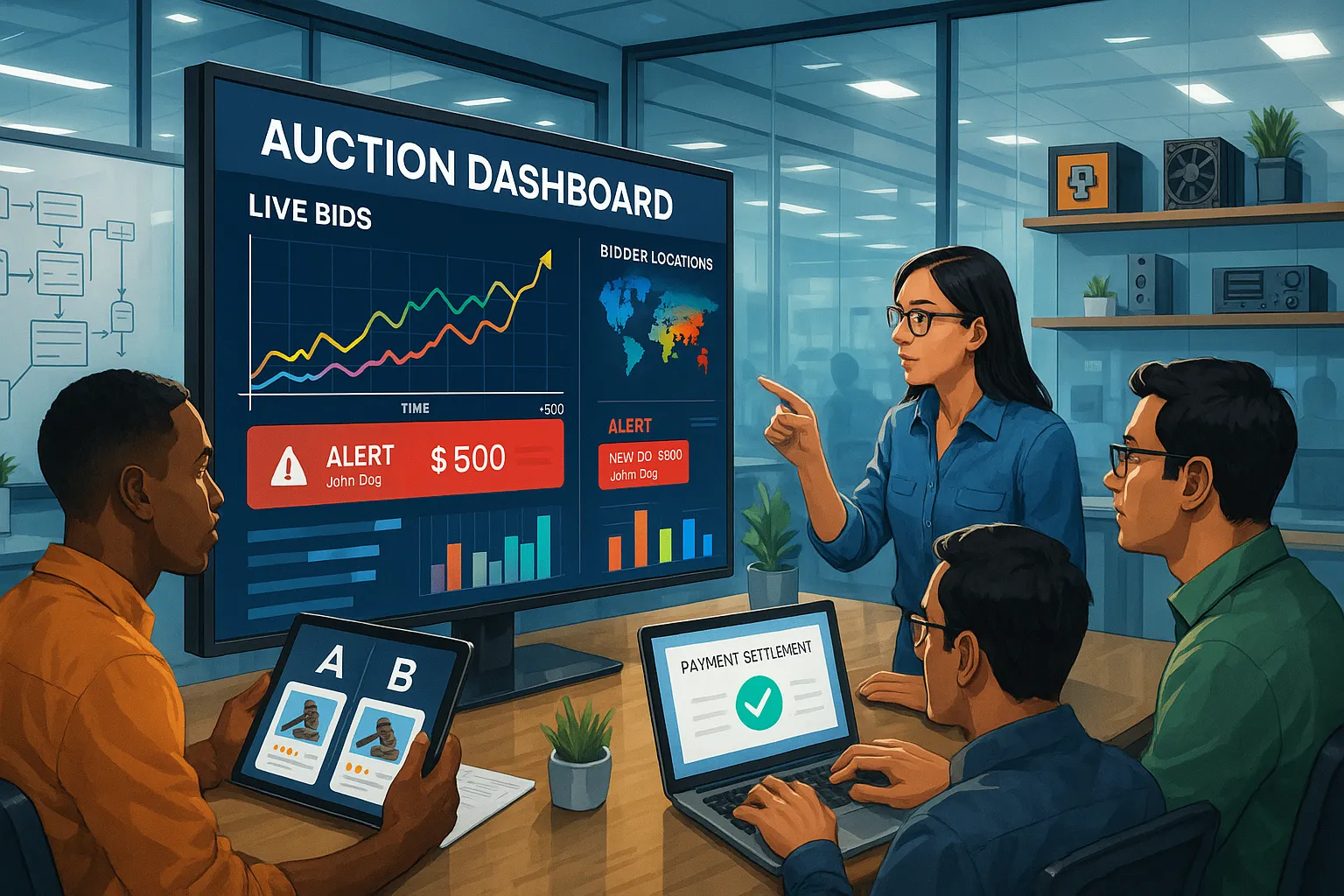9 Proven Strategies to Increase Your Revenue with Automated Bidding Systems

In 2025, automated bidding platforms have matured from experimental add-ons to mission-critical revenue engines. Whether you sell ad inventory, SaaS add-ons, digital collectibles, or surplus hardware, the right auction workflow can lift margins by double-digit percentages—often without adding headcount. Below are nine proven, battle-tested strategies that the highest-earning sellers use to squeeze every extra dollar from their automated bidding systems.
1. Match the Auction Model to the Value Curve
Not every lot deserves the same format. High-demand, low-supply items frequently outperform in First Price Auctions, while commodities with volatile demand find equilibrium in Second Price or transparent bidding.
Why it works: Bidders reveal private valuations differently depending on risk. Aligning model to inventory type removes friction and lifts average clearing price.
How to implement in Rankbid: From the dashboard, clone an existing auction, switch the model with one click, and push it live—no code needed. If you prefer an API route, send a
PATCH /auctions/{id}call with"pricing_mode":"second_price".
Read more about model selection in our deep dive on First vs. Second Price auctions.
2. Segment Ruthlessly & Set Smart Reserve Prices
Segmenting your catalog by geography, buyer tiers, or even time of day allows you to create micro-markets where demand consistently exceeds supply. Pair each micro-market with a data-backed reserve price (a.k.a. floor) to guarantee you never sell below market value.
Quick win: Export last quarter’s bids, sort by buyer sector, and locate outliers where the median winning bid is 20% above the mean. Spin those lots into a dedicated auction with a reserve price set 10% under the historical median.
Tool tip: Rankbid’s “Suggested Reserve” widget scans historical bid logs and recommends a floor that maximizes expected revenue while maintaining win rate.
3. Let Machine Learning Handle Dynamic Floor Pricing
A static reserve price is a good start, but it still leaves money on the table when market sentiment spikes. Modern bidding engines—including Rankbid’s AutoFloor module—can ingest real-time data (currency rates, ad performance, seasonal demand) and raise or lower floors automatically.
Case study: An e-commerce marketplace using dynamic floors during holiday flash sales saw a 38% uplift in average order value without hurting sell-through.
Extra credit: Feed customer intent signals from your CRM into the AutoFloor API endpoint to create buyer-specific reserve curves.
For a deeper technical look at dynamic pricing algorithms, the research paper “Adaptive Reserve Prices in Online Auctions” from Stanford HAI is an excellent primer.
4. Act on Real-Time Analytics—Not Yesterday’s Reports
Waiting until the auction ends to analyze performance guarantees you’ll miss optimization windows. Stream live bid events to a BI tool or use Rankbid’s real-time dashboard to spot anomalies at the five-minute mark.
Actionable metric: Watch bid frequency vs. unique bidder count. A divergence often signals an artificially low reserve or a bot invasion that needs mitigation.
Pro move: Set threshold-based webhooks (
POST /webhooks/bid_activity) that fire Slack alerts when the bid rate drops 30% below the rolling average.
5. Offer Self-Service Access to Curated Buyer Pools
Manual onboarding slows velocity. By giving vetted partners the ability to create bids and even run private auctions in a white-label UI, you transform your platform into a marketplace—and collect fees twice.
Security best practice: Use role-based access in Rankbid to cap individual buyers at predefined spend limits and restrict them to specific categories.
Revenue upside: Platforms that launched buyer self-service reported an average 23% lift in GMV within the first two quarters, according to a 2024 report by Forrester.
6. Streamline Payment & Settlement—Then Promote It Loudly
Nothing kills repeat spend like a slow payout. Automating capture, settlement, and refunds with a modern PSP (payment service provider) reduces disputes and inspires bidder confidence.
Why Stripe matters: Stripe’s instant payouts and automatic 3D Secure verification cut fraud by up to 50% versus legacy gateways (Stripe data , 2024).
Rankbid integration: Payments are tokenized end-to-end, giving you PCI peace of mind without additional compliance overhead.
When the finance team stops chasing invoices, those man-hours can shift to optimizing your catalog or courting new sellers—both direct revenue levers.
7. A/B Test Everything—Titles, Thumbnails, Lot Sizes
Small presentation tweaks drive outsized results. Test:
Auction titles with and without urgency cues (e.g., “Final 24h Clearance”).
Thumbnail angle or background color.
Single-item lots vs. bundled packages.
Rankbid’s split-test mode randomly assigns bidders to variant A or B and surfaces statistically significant lifts once the confidence interval hits 95%. No third-party tool required.
8. Automate Post-Auction Retargeting & Upsells
Your relationship with the bidder shouldn’t end when the gavel falls. Trigger emails or in-app messages that:
Offer the second-highest bidder a “Buy It Now” fallback at 5% above their last offer.
Promote complementary products or future auctions of similar items.
Provide loyalty points redeemable only on your platform.
Rankbid’s Zapier connector (or native webhooks) makes it trivial to sync auction outcomes to Klaviyo, HubSpot, or your own backend for tailored follow-ups.
9. Close the Loop with KPI-Driven Iteration
Revenue optimization is a moving target. Establish a weekly ritual to review:
Average revenue per auction
Bidder acquisition cost
Payment capture success rate
Net promoter score (NPS) for sellers and buyers
Feed those KPIs back into product tweaks—be it reserve price adjustments, onboarding flows, or payment methods. Rankbid’s dashboard lets you pin custom metrics so every stakeholder sees the scoreboard the moment they log in.
Putting It All Together
Automated bidding systems thrive on data, precision, and relentless testing. By:
Selecting the optimal auction model,
Setting intelligent, dynamic reserves,
Acting on live analytics,
Empowering buyers with self-service tools,
Automating payments and post-auction marketing,
you engineer a compound effect that consistently boosts top-line revenue.
Ready to operationalize these strategies? Explore Rankbid’s flexible pricing plans, spin up your first auction in minutes, and watch the numbers speak for themselves.
👉 Start your free trial at Rankbid.io or schedule a 15-minute demo with our revenue engineers.